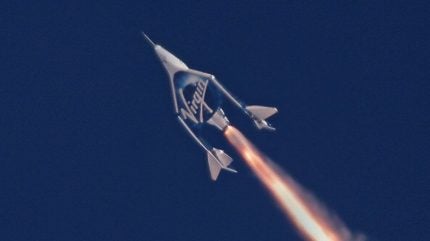
Virgin Galactic is set to carry out the next test flight phase of its SpaceShipTwo suborbital rocket, known as VSS Unity, from Mojave Air and Space Port in California, US.
The test marks the fourth powered flight of VSS Unity and will see the rocket flying higher and faster than its previous flights.

Discover B2B Marketing That Performs
Combine business intelligence and editorial excellence to reach engaged professionals across 36 leading media platforms.
As part of the test, VSS Unity is expected to fly to an altitude of more than 50 miles, reported washingtonpost.com.
If successful, the flight will be Virgin Galactic’s first manned mission from the US since the country’s last space shuttle mission in 2011.
In a statement, Virgin Galactic said: “Our SpaceShipTwo, VSS Unity, is entering the next stage of testing. During this phase of the flight programme we will be expanding the envelope for altitude, air speed, loads, and thermal heating.
“We also plan to burn the rocket motor for durations, which will see our pilots and spaceship reach space for the first time.”

US Tariffs are shifting - will you react or anticipate?
Don’t let policy changes catch you off guard. Stay proactive with real-time data and expert analysis.
By GlobalDataThe upcoming test is also expected to generate new data points, particularly relating to supersonic handling qualities and thermal dynamics of VSS Unity.
Data to be generated from both these points will be monitored in the cockpit and from the company’s mission control room on ground.
Virgin Galactic added: “These observations will largely determine at what stage we decide to shut the rocket motor down.
“If all goes to plan our pilots will experience an extended period of micro-gravity as VSS Unity coasts to apogee, although – being pilots – they will remain securely strapped in throughout.”
Virgin Galactic will also carry four research payloads that are part of the Nasa Flight Opportunities Programme in its upcoming flight.



